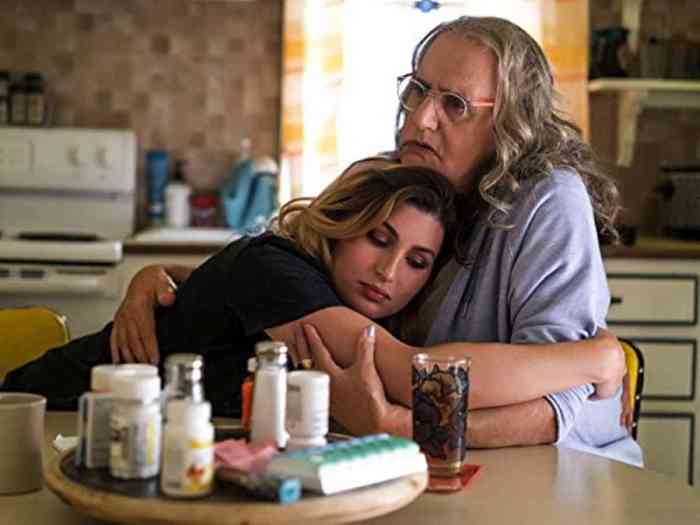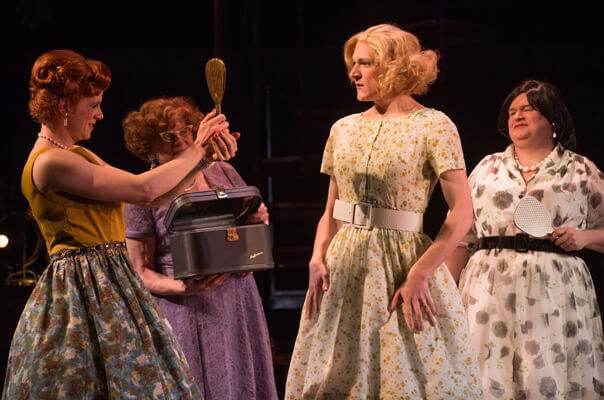There’s nothing worse than middle-aged New Yorkers complaining about how the city has changed since the “good old days” — but it’s wonderful when cranky old coots get up and actually do something to recreate the lost wonders of the city.
That’s exactly what drag queen Lady Bunny and Neil Patrick Harris did with Wigstock. The long-running outdoor festival of drag performances was held in New York for nearly 20 years in the 1980s and ‘90, but fizzled out back in the early 2000s. The event was resurrected as Wigstock 2.HO at Pier 17 on September 1, as a day-long festival with scores of performers, wig cannons, the world’s oldest drag queen, and several close contenders for that title [snap!]. Aside from being a fun show, it also illustrated how cultural attitudes toward gender identity and drag have changed since the ‘90s.
There was no shortage of middle-aged queens talking about how the city used to be cooler in the Back When Times — back when Frankie Knuckles was DJing, when Union Square was still a “needle park,” and when the Club Kids roamed the streets from the Limelight to Pyramid.
Naturally, these cultural references were lost on half the audience. Among the longtime Lypsinka fans were some drag enthusiasts who weren’t even born when Divine still walked the Earth. To these younger attendees, drag means RuPaul’s reality TV series, and Wigstock is something from the history books.
I spoke to Dany Johnson, who not only directed Fogo Azul, a Brazilian drum corps that opened the show, but was also the stage manager of Wigstock from 1989 through the early 2000s. She said the younger members of the band “had no idea what [Wigstock] was. I sent them a link to Tom Rubnitz’s movie and the other movie from 1995.” According to Johnson, even the “Woodstock” reference is lost on some of the youngsters.

This younger generation might also have trouble remembering social attitudes about gender expression and gender identity in the 20th century. Some of the performers at Wigstock 2.HO straddle the line between drag queen and trans performer who happens to do drag.
Actress Candis Cayne, who performed at Wigstock in the ’90s and also has worked in contemporary film and TV, told me, “To me, drag is what you do, and trans is who I am. I take trans roles, but I also I take cis roles. When I perform on stage in a lot of makeup, I’m a trans drag performer. One is your identity and the other is fun.”
About Wigstock in the ‘90s, Cayne said, “Back when I started drag, it was still a very fringe thing on the edge of society. We were doing it then for an outlet to be creative, glamorous, and to perform. Because for a lot of us that was our only outlet.”
Also on hand was Peppermint, who audiences might know from “RuPaul’s Drag Race,” and her current work on Broadway, in the musical “Head Over Heels.” Asked about being openly transgender before achieving fame as a drag performer, she said, “It’s important to make the distinction that many trans women may not want to be considered drag queens. Because it promotes the idea that being trans and being a woman and feminine is a put-on. Something that is fake, that’s not serious… The idea of ‘a man in a wig’ or ‘a man in a dress’ is attached to drag — but it’s also attached to negative stereotypes about transness.”
I also asked Peppermint about trans performers taking on roles in mainstream entertainment, such as in “Head Over Heels” — where her character is of non-binary gender. With the entertainment industry trying to feature trans characters, there isn’t necessarily a trans actor ready to take on all of these roles, or to write and direct them. According to Peppermint, “Everyone wants an authentic performance and an authentic connection to the art. The best way to do that is to have trans people telling their own stories, or participate in telling their own stories.” But, she added, “It’s not necessarily that cisgender people can’t be involved in that. It’s about creating space that doesn’t exclude trans people.”

I also spoke to trans icon Amanda Lepore and drag artist Sharon Needles, a pair of performers who perfectly sum up the influence of the trans community on the drag community, and vice versa. Readers may know Needles from “RuPaul’s Drag Race.” Lepore is a model who describes herself as “the most expensive body on Earth,” due to her exquisitely sculpted doll-like features. Needles calls herself Lepore’s biggest fan — she even has a tattoo of Lepore on her shoulder, and recorded a single titled “I Wish I Were Amanda Lepore.
Needles was too young to be in the original run of Wigstock, but recounted the tale of how she discovered a VHS copy of 1995’s “Wigstock: The Movie” documentary, saying she “hid it under my mattress the way most teenage boys hid porn. I used it almost as a Bible and a manual to become who I am.” She went on to say, “I gives me goose pimples to think that I’m [at Wigstock] today being able to participate in something that meant so much to me cinematically as a kid.”
About the club and drag scene near the end of the original run of Wigstock, Lepore said, “Drag was sort of dying in the club scene, and it was sad. There were people holding onto it, but it wasn’t like it was in the ‘90s where everyone did drag. When ‘RuPaul’s Drag Race’ came, you would see super-young queens doing drag, and it was amazing. And Lady Gaga helped too, for the freak factor.”
“I have to agree,” Needles chimed in. “The post-‘RuPaul’s Drag Race’ world are people that want to do drag. But before, we needed to do drag. In a post-‘Drag Race’ world, drag queens become the celebrities of their communities — but before, we were considered the freaks of beauty and glamour and fashion. Being shocking and extreme was a necessity to us girls who came before ‘Drag Race.’ It softened the blow of how people approach drag queens, and I think that’s a good thing.”
Needles impishly added, “But I also understand when people say ‘RuPaul’s Drag Race’ done fucked up drag.”

In a promising sign of Wigstock 2.HO’s potential influence, I spied Lepore greeting Desmond Is Amazing, an 11-year-old fan, drag kid, and fellow performer at the show.



































